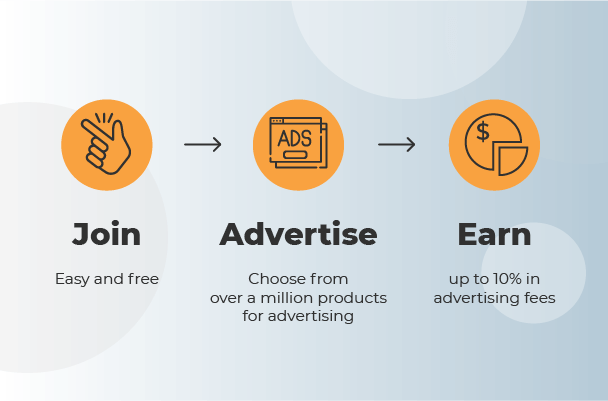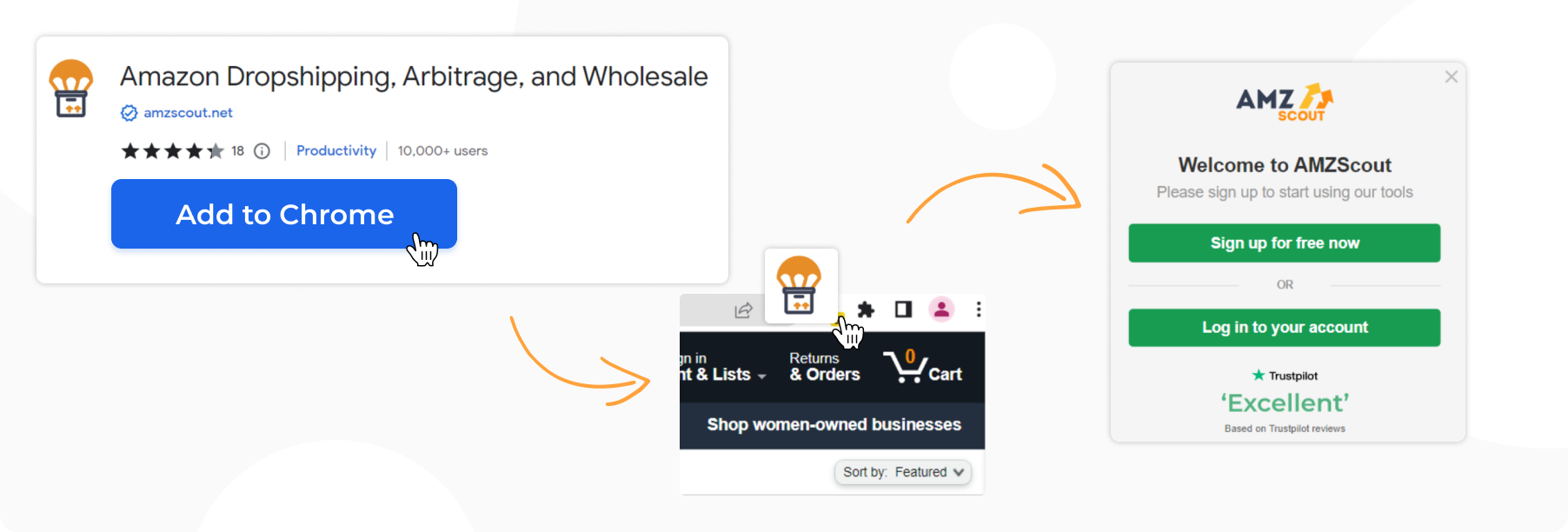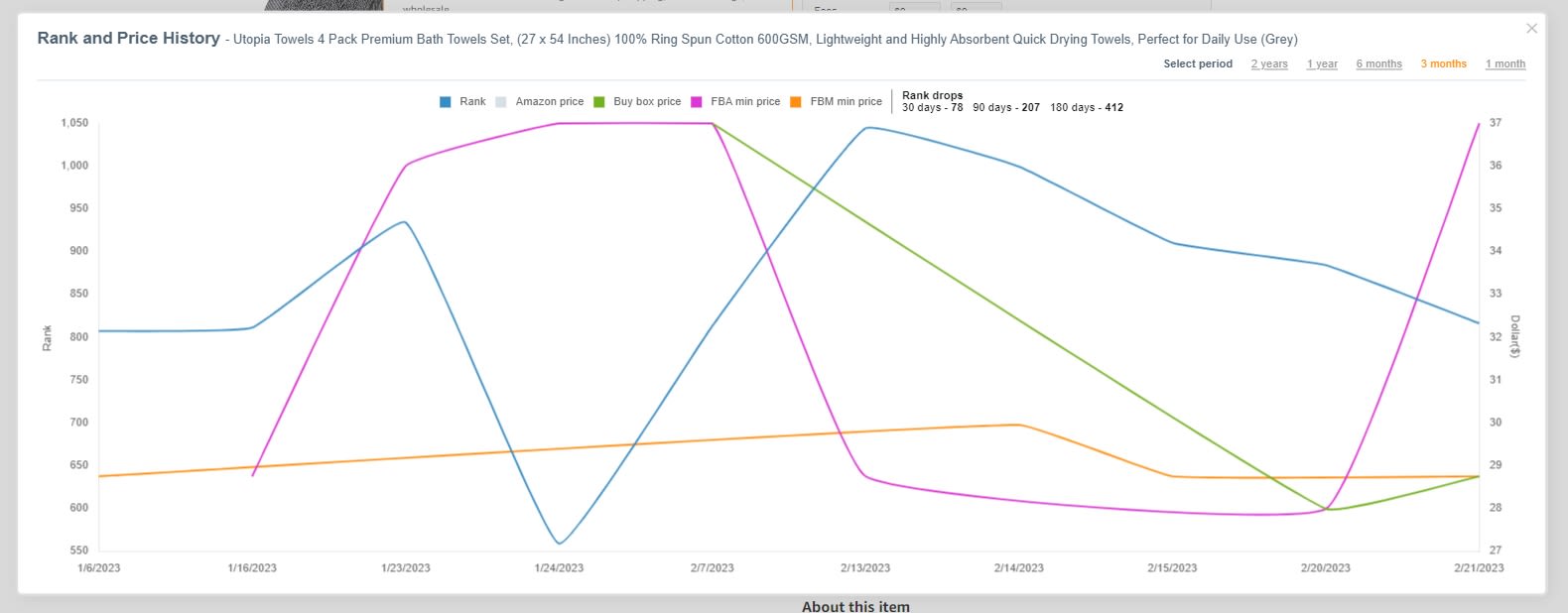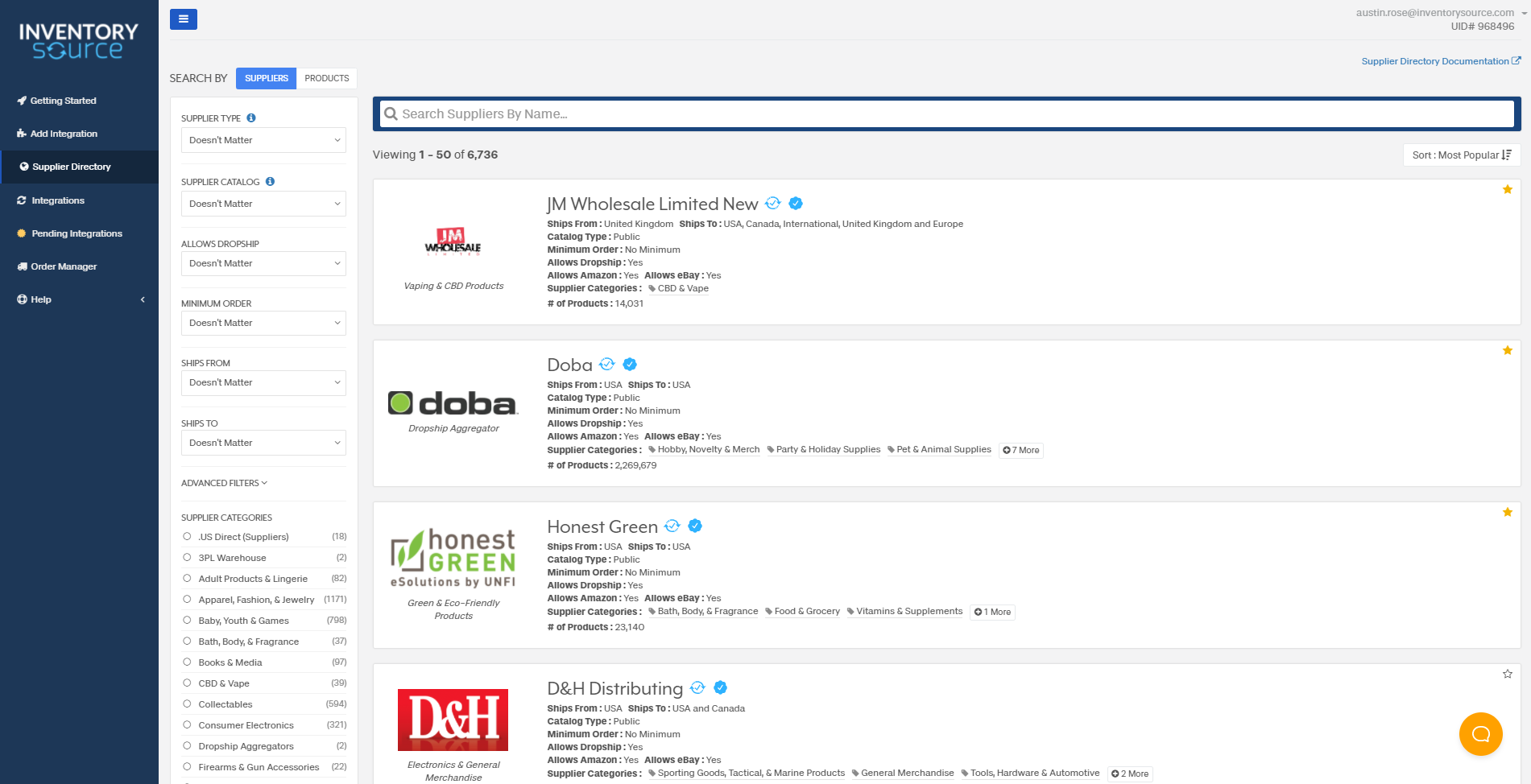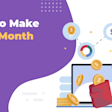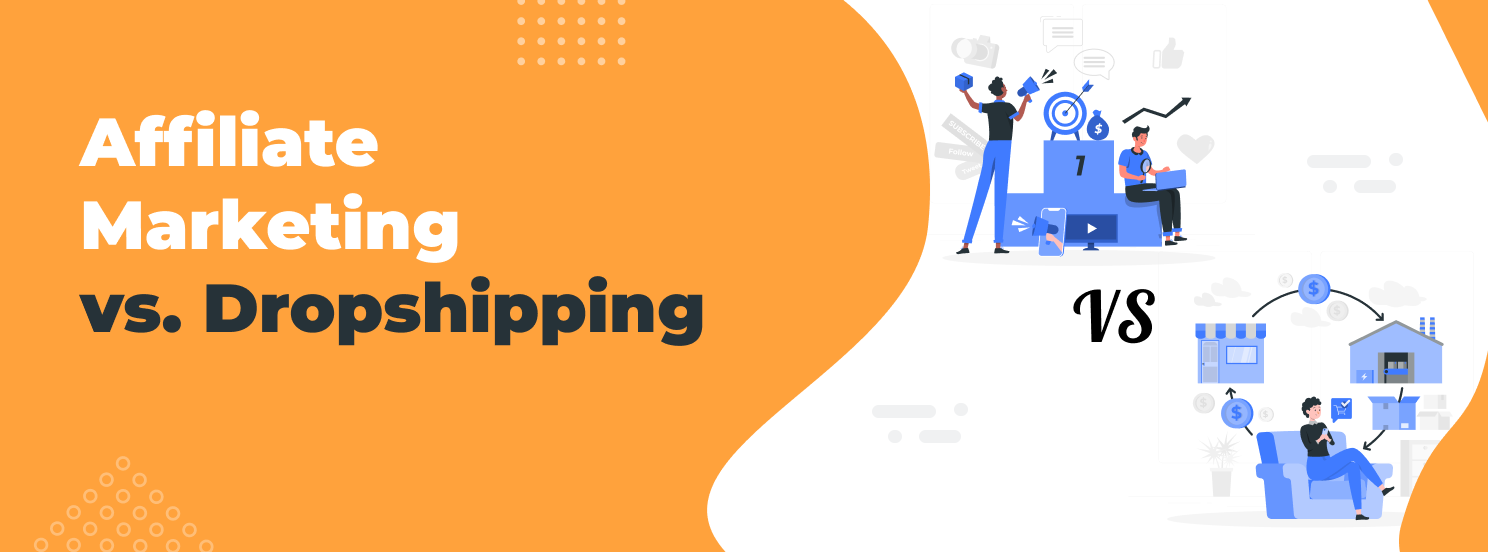
The Difference Between Dropshipping and Affiliate Marketing: The Best Business Model for 2025
Many potential entrepreneurs are deterred by the high startup costs of launching a business. Fortunately, the e-commerce industry offers options like dropshipping and affiliate marketing. With these business models, you can begin an online venture with minimal investments and hassle while still turning a significant profit.
In this article, we'll delve into the specifics of each model and provide a brief overview of how to start each one.
Table of contents
An Overview of Dropshipping and Affiliate Marketing
Both affiliate marketing and dropshipping provide opportunities to earn money online without the hassle of managing inventory. The main difference lies in how money is earned with each model: affiliate marketing involves promoting others' products for commissions, while dropshipping entails selling products from one's own store and retaining full profits.
Affiliate marketing enables you to earn money by sharing special links to products on your blog or website and getting a percentage of any sale made through those links. This helps sellers because it boosts their sales without the need to spend a lot on advertising. Thus, affiliates can earn from their content without handling products or customer support.
Dropshipping is a business model where you add products from a supplier to your online store, and you only pay the supplier when a sale is made. The supplier then ships the products directly to the customers, so you never have to keep any physical inventory. This model requires a minimal upfront investment since you don't handle inventory, yet it offers the potential for significant profits.
Below we'll discuss the key differences between dropshipping and affiliate marketing so you can determine which model might be more suitable for you.
How to Choose: Dropshipping vs. Affiliate Marketing
When you’re contemplating the decision of affiliate marketing vs. dropshipping, you need to evaluate the pros and cons of each model as it aligns with your business goals, resources, and preferences. Here are a few criteria to consider:
Personal interests
Dropshipping demands deeper involvement in the world of e-commerce business, in terms of handling customer support and product selection.
Affiliate marketing is more focused on content creation and engaging your audience through your blog, site, or page.
Upfront investments
Dropshipping typically entails minimal upfront costs, but you still need to invest in building your website, setting up necessary accounts (such as Amazon Seller Account), and more.
Affiliate marketing requires establishing your own platform, such as a blog, but it typically comes with lower initial costs compared to dropshipping.
Scalability
Dropshipping offers the potential for higher income, as you can set your own prices on products and expand your product range.
Affiliate marketing profits depend on commissions set by product owners, limiting your ability to scale or adjust earning potential directly.
Initial requirements
Dropshipping can be started from scratch, but it may require more know-how in managing product listings or maintaining a website.
Affiliate marketing requires an existing audience of viewers who will see your content, which may require time and effort to build.
Brand promotion
Dropshipping entails investing in ads and implementing promotional strategies, all directed towards enhancing the visibility and reputation of your own store and personal brand.
Affiliate marketing involves promoting products or services offered by other sellers, shifting your focus towards amplifying the reach and driving sales for external brands.
Dropshipping and affiliate marketing both appeal to entrepreneurs with distinct initial requirements and interests. It's important to choose the option that better aligns with your own preferences. However, these business models aren't mutually exclusive; you can also consider combining them to boost your chances of success.
In the next section, let's explore how to start each of these businesses.
How to Start with Dropshipping
In order to dropship effectively, it’s essential to plan each aspect of your business carefully. Let's walk through the key steps required to set up your own dropshipping store.
Step 1. Choose a Niche and Find a Profitable Product.
Consider what types of products you'd like to sell by utilizing various sources for inspiration. For instance, you can check out:
Social media: Take a look at hashtags and influencers within your niche to discover emerging trends.
Google Trends: Identify popular search terms to help you understand market demand.
Amazon: With its extensive inventory of over 300 million products, this platform is a great indicator of current market trends.
While each seller lean toward a particular niche, certain criteria are universally important for anyone hoping to generate a profit:
High demand: It's crucial for a product to have strong demand in order to be profitable. Additionally, understanding if demand fluctuates seasonally or remains constant helps sellers tailor their selling and inventory strategies accordingly.
Low competition: Ensure that the market isn't oversaturated with sellers offering the same product or within the same niche. Otherwise, you might face price-dumping, low profits, and difficulty gaining visibility.
High margin: Products with a margin of over 20% ensure sufficient returns on investment. This margin provides a buffer for unforeseen expenses and allows you to remain competitive while maximizing your profits.
Meeting these conditions sets the stage for a promising product. However, in order to verify each of these factors, you need to conduct thorough product research. Since not all data (like sales statistics) is available to the public, utilizing specialized analytical tools enables you to access this essential information.
For those who are interested in dropshipping on Amazon, the AMZScout toolkit offers a convenient solution. It allows you to quickly assess if a product is suitable for the platform and how profitable it will be.
Assess Product Profitability
You can determine whether a product is likely to generate revenue with the Dropshipping, Arbitrage, and Wholesale Extension, which is incredibly user-friendly.
Just follow these steps:
1. Install the Amazon Dropshipping, Arbitrage, and Wholesale Extension. Start your free trial by entering your email address.
2. Search for products. Type any product name or ASIN you want to analyze in the Amazon search bar and open the product page you are interested in.
3. Review the data. In the built-in window, review the following parameters:
Selling Restrictions: In the top right-hand corner of the window, you can check if the product is gated, contains hazardous materials , or is from a private label. Gated and HAZMAT items require extra documentation and approval before you can sell them, while private label items can't be sold by other resellers. This information helps you see if you can sell the product quickly.
Competition: Above the calculator, there are three columns indicating merchant types and the number of sellers per type. Check how many other merchants are selling the same product to avoid those with fierce competition, especially if Amazon is among the sellers.
Monthly Sales: In the right-hand corner, you can view the estimated number of sales per month for a product. A figure over 200 indicates strong demand and potential for high earnings.
4. Evaluate the product history. Click ‘Rank, Price and Buy Box History’ to examine the item’s ranking trends over a specific timeframe and review pricing history.
5. Estimate the approximate profit. Use the built-in calculator within the extension to assess an item’s profitability by entering your cost per product, including the purchase price and other expenses. For dropshipping, since this model does not involve Amazon FBA fulfillment, calculate the profits under the FBM (Fulfilled by Merchant) column. Check whether your profit margin exceeds 20% to ensure a satisfactory return on your investment.
This quick assessment of potential profitability on Amazon can also be applied universally to other selling platforms, as the evaluated data (competition, sales trends, etc.) remains relevant across the board.
Step 2. Set Up an E-Commerce Store.
Choosing a platform where you want to sell your products is crucial because this will impact your reach and overall profitability. Consider factors like your budget, and the amount of effort and technical expertise required. Here are the main options:
Online marketplaces: Platforms like Amazon and eBay are easy places to start with just a simple account registration process. Amazon offers a vast customer base which makes it a popular choice. However, be sure to review each platform's specific rules regarding dropshipping.
Your own website: You can build a site on Shopify without technical knowledge, or use WooCommerce for full customization. Having your own site gives you complete control without third-party commissions or limitations, but may cost more due to maintenance and promotion expenses.
Regardless of your platform choice, it’s important to select a supplier who offers automated solutions so you can import products into your store easily. Let's discuss how to find the best supplier for your store.
Step 3. Find Reliable Suppliers.
Consider checking out online marketplaces like Alibaba, where you can find a variety of products at low prices, or specialized dropshipping suppliers like Bdroppy or Brand Distribution. Verify their terms, including:
The cost of importing products: Typically, dropshipping involves a subscription fee.
Product range: Ensure that their product range is extensive and renewed regularly to minimize competition with other dropshippers.
Shipping costs: Ensure that the courier they use is reliable and offers speedy delivery. Consider that the final customers might be charged customs fees if products are shipped from a supplier based in China or elsewhere overseas.
Integration options: Check for integrations that allow you to import products into your store effortlessly, which provides increased automation of your business.
Compliance with platform rules: Be sure to comply with the regulations of platforms like Amazon, which may have specific packaging requirements.
Reliability: Verify feedback and ratings on sites like Trustpilot to ensure that the supplier is reliable. You can also search online for any fraud reports associated with the supplier’s name.
Consider using multiple suppliers for your e-store. It's essential to check whether their integrations are compatible and do not conflict with each other. This approach allows you to offer a wider range of products to your customers, enhancing your store's appeal and increasing the likelihood of building a successful business.
Step 4. Market Your Store.
To drive traffic to your store, boosting its visibility is essential. Here are a few key strategies:
SEO: Identify and incorporate relevant keywords into your store content.
Social media: Promote your content through various channels and collaborate with influencers.
PPC: Run pay-per-click campaigns to drive traffic to your store immediately.
Promotions and Discounts: Offer discounts to attract price-conscious customers, but also ensure that your prices remain competitive.
Be concise in your marketing efforts and analyze performance results. Adjust your strategy based on these insights to increase your store visibility and boost sales.
Step 5. Handle Orders and Customer Service.
Since you have less control over order fulfillment with this model, ensure that your supplier delivers orders promptly and accurately.
Provide excellent customer service by responding to inquiries and complaints quickly. Personalize the customer experience by including a gift or thank-you note via your supplier. Encourage customers to leave positive reviews to enhance your store's credibility.
Building a successful dropshipping business requires thorough product selection, excellent customer service, and choosing the right platform to sell on. By focusing on these areas, you can create a trustworthy store and drive long-term growth.
Now, let's explore the steps needed to kickstart your affiliate marketing journey.
How to Start with Affiliate Marketing
Starting an affiliate marketing business involves a few key steps. Here's a short guide:
Step 1. Choose a Niche.
Select a niche that aligns with your interests or existing content. For instance, if you have a sports blog, focus on promoting sports-related products, like athletic equipment and apparel.
Step 2. Find an Affiliate Program.
Explore various affiliate programs on platforms (like Amazon) with favorable commission rates and relevant products for your audience.
Step 3. Build Your Blog.
If you haven't established a blog yet, choose a platform to get started. Consider factors such as platform fees, ease of content publication, and visibility.
Step 4. Create Quality Content.
Produce content that provides value to your audience and incorporates affiliate links naturally, such as product reviews, tutorials, or recommendations.
Step 5. Drive Traffic.
Utilize SEO strategies and employ targeted promotional tactics like using relevant keywords to boost your content's visibility. You can also build relationships with your audience through comments or emails to strengthen trust and loyalty.
It's essential to stay updated on content trends to keep it engaging and appealing to your audience. Furthermore, thorough product research is crucial to ensure that the items you promote are of high quality and relevance. Neglecting any of these aspects may result in audience dissatisfaction and potential abandonment of your blog.
FAQ
Can you combine dropshipping and affiliate marketing?
Yes, you can combine dropshipping and affiliate marketing to diversify your income sources. One can even support the other - for example, if you have a strong media presence, you can promote the products in your own store. This approach allows you to maximize your profits and create a more robust online business strategy.
Which is more profitable - affiliate marketing or dropshipping?
Both dropshipping and affiliate marketing can generate solid income, but a dropshipping business tends to be more scalable. Affiliate marketing limits your earnings to commissions, while dropshipping lets you set your own prices and expand your product range. Additionally, dropshipping allows you to promote your own store, whereas affiliate marketing boosts other brands.
Which is easier - affiliate marketing or dropshipping?
Affiliate marketing is often considered to be easier for beginners, especially if you already have an audience. You can simply post links to products that viewers might be interested in and earn a commission each time they make a purchase. While dropshipping is also easy to begin, it requires constant product research and handling customer support.
Conclusion
There's no definitive answer to the question of which approach is better - affiliate marketing or dropshipping. It depends on your preferences—whether you prefer to focus on content creation and audience engagement, or you’d rather build and manage an online store. In both cases, you can use the AMZScout toolkit to help you find the best items to promote or sell. This way, you'll maximize your profit and stay ahead of market changes.
